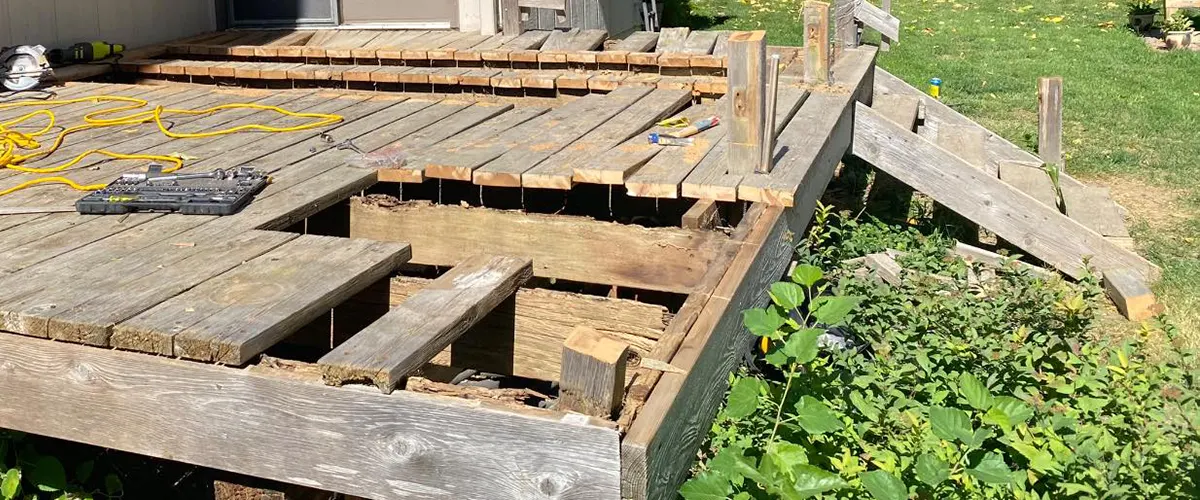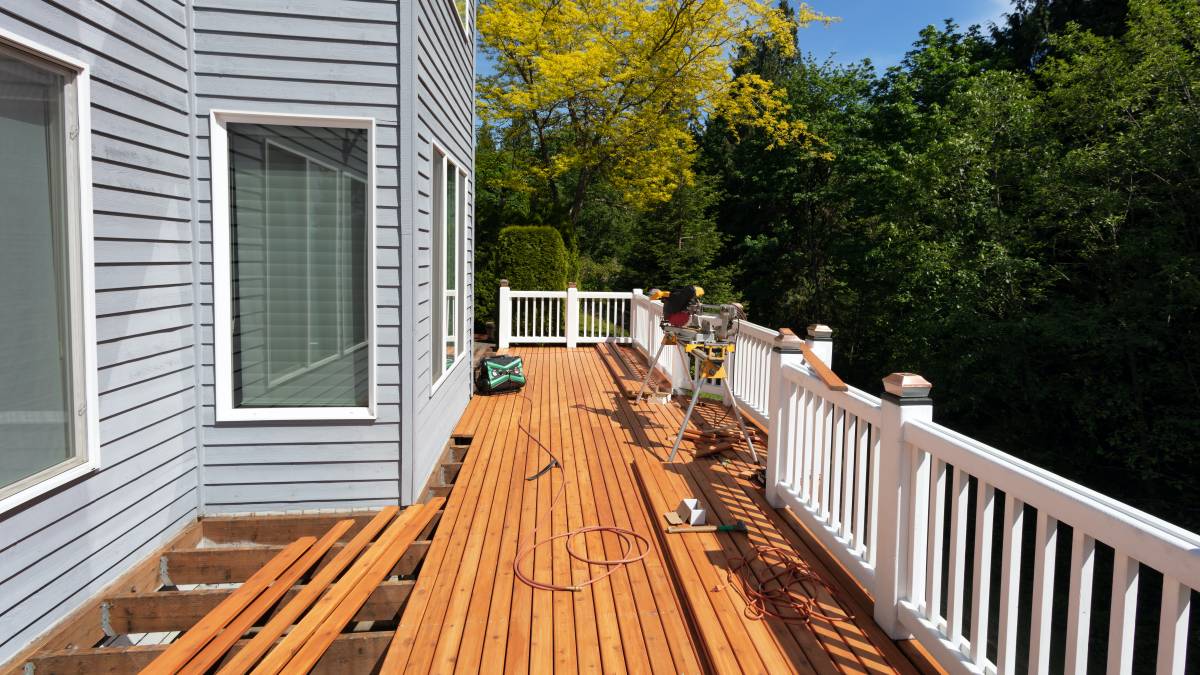Protecting Appeal: The Relevance of Timely and Skillful Deck Repair
Wiki Article
Revitalize Your Deck's Elegance and Performance: Vital Tips for Successful Deck Repair
Deck fixing is a vital part of preserving the appeal and performance of your outdoor space. With time, decks can become worn, harmed, and lose their charm. With the ideal tips and methods, you can revive your deck and transform it into a spectacular and practical location as soon as again. From analyzing the level of the damage to cleansing, fixing, and using a fresh coat of repaint or discolor, there are a number of vital steps to think about in this procedure. If you're looking to rejuvenate your deck and produce an area that you can delight in for years to come, maintain reading to discover the important ideas for successful deck fixing.Analyzing the Damages

Cleaning and Preparing the Surface

For harder discolorations, you might require to make use of a deck cleaner or a light cleaning agent blended with water. Use the cleaner or cleaning agent to the deck surface area and scrub with a power or a brush washer, if offered, to eliminate the spots.
After cleaning, rinse the deck thoroughly with tidy water to remove any kind of deposit from the cleansing remedy. Permit the deck to completely dry totally before waging any repairs. This is necessary as moisture entraped in the timber can cause future issues such as warping, rotting, or mold and mildew development.
When the deck is clean and dry, examine the surface for any kind of loosened or damaged boards. Change any type of boards that are broken, splintered, or rotted. In addition, look for any kind of loose or sticking out nails and screws and tighten up or replace them as required.
Repairing or Changing Damaged Boards
Repairing or changing damaged boards is a necessary step in recovering the architectural integrity and visual charm of your article source deck. Over time, direct exposure to severe weather, moisture, and normal usage can create boards to warp, fracture, or come to be loose. Ignoring these problems can lead to additional damage and jeopardize the safety of your deck.To start the repair procedure, very carefully inspect the deck boards for any kind of signs of damages. Look for splintering, decomposing, or any various other visible flaws. For small issues such as loosened nails or small fractures, you might have the ability to just fix the board. This can be done by sanding down the damaged area, applying timber filler, and afterwards sanding it smooth before redecorating the board (Deck Repair).
Nevertheless, if the damages is more severe, it may be needed to change the whole board. To do this, start by removing the damaged board utilizing a crowbar or a screwdriver. Action the measurements of the board accurately to make sure an appropriate suitable for the substitute. Cut the brand-new board to dimension and safeguard it in place utilizing deck screws or nails.
Keep in mind to select boards that match the material, color, and structure of the existing deck to preserve a cohesive look. On a regular basis evaluating and without delay fixing or changing damaged boards will help prolong the lifespan of your deck and guarantee its capability and elegance for several years to find.
Applying a Fresh Coat of Stain or Paint
When rejuvenating the look of your deck, an important step is using a fresh coat of tarnish or paint. Not just does this give your deck a rejuvenated and lively look, however it also gives protection against the components, preventing rot, degeneration, and fading caused by UV rays.When picking between tarnish and paint, think about the advantages and disadvantages of each. Spot permits the natural grain and appearance of the wood to show via, enhancing the appeal of the deck. It also permeates the timber and offers much better protection against wetness. On the various other hand, paint provides a broader variety of colors and supplies an extra opaque surface, concealing blemishes and providing remarkable UV defense.
Prior to using the paint or stain, evaluate it on a little low-profile area to guarantee it matches your desired color and achieves the desired look - Deck Repair. Apply the discolor or paint uniformly utilizing a brush, sprayer, or roller , complying with the producer's directions. Make certain to use several thin coats instead of one thick coat to avoid drips try these out and guarantee proper coverage
After applying the fresh layer of tarnish or repaint, allow sufficient drying time prior to making use of the deck. This will certainly stop any type of damage or smudging of the surface. Regular upkeep, such as cleansing and reapplying the tarnish or repaint every few years, will help extend the life of your deck and maintain it looking its finest.
Enhancing Security Features and Ending Up Touches
To make sure a safe and sleek deck, it is necessary to think about boosting security features and including finishing touches. When it comes to deck repair service, safety must always be a leading concern. One method to boost security is by mounting handrails along the sides of the deck. Hand rails supply security and support, specifically for those with balance concerns or movement constraints. Furthermore, including nonslip strips or finishings to the deck surface area can considerably reduce the threat of drops and slides, particularly when the deck comes to be wet or unsafe.One preferred option is adding lighting to the deck area. Not just does this supply additional seating room, however it also includes a fashionable and practical component to the deck. Think about adding attractive aspects such as potted plants, outdoor carpets, or ornamental accents to personalize the deck and develop an inviting atmosphere.
Verdict
In final thought, effectively fixing and restoring your deck calls for assessing the damages, cleaning and preparing the surface area, repairing or changing damaged boards, using a fresh coat of repaint or discolor, and boosting security attributes. By complying with these important pointers, you can restore your deck's elegance and performance, guaranteeing it stays a secure and pleasurable exterior space for several years to come.Deck repair service is a vital component of maintaining the appeal and functionality of your outside room. If you're looking to revitalize Get More Information your deck and produce a room that you can delight in for years to come, maintain checking out to discover the crucial suggestions for effective deck fixing.
Changing or fixing damaged boards is a vital action in restoring the structural stability and visual allure of your deck.To begin the repair work procedure, carefully examine the deck boards for any type of indicators of damages. In addition, adding nonslip strips or coverings to the deck surface area can substantially reduce the risk of slips and falls, particularly when the deck comes to be damp or unsafe.
Report this wiki page